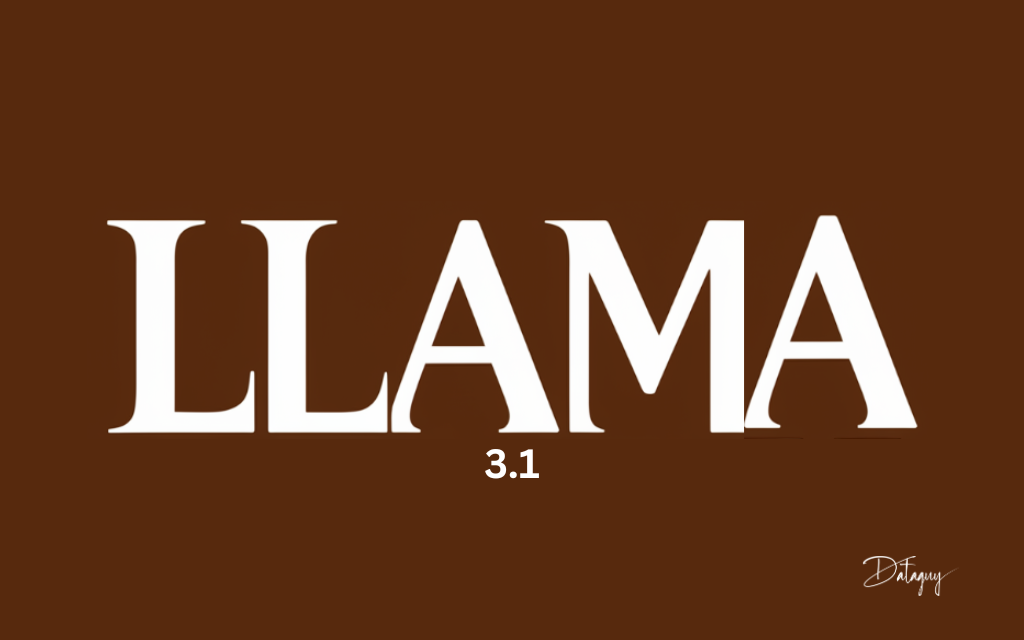Last updated on July 24th, 2025 at 04:42 pm
Insights Index
ToggleMeta's Llama 3.1: The AI Titan That's Changing the Game
Meta’s latest release, Llama 3.1, marks a significant milestone in the world of artificial intelligence. This blog post explores the revolutionary features of Llama 3.1 and its potential impact on the AI landscape.
1. Introducing Llama 3.1: A New Era of Open-Source AI
Meta has unveiled Llama 3.1, featuring the groundbreaking 405B model – the world’s largest and most capable openly available foundation model. This release represents a paradigm shift in the AI industry, with open-source models now leading the way in capabilities and performance.
2. Unparalleled Capabilities and Accessibility
Llama 3.1 405B boasts state-of-the-art capabilities in:
- General knowledge
- Steerability
- Mathematical reasoning
- Tool use
- Multilingual translation
These advancements put Llama 3.1 on par with top closed-source AI models, democratizing access to cutting-edge AI technology.
3. Enhanced Features Across the Board
The release includes upgraded versions of the 8B and 70B models, offering:
- Multilingual support
- Extended context length of 128K tokens
- Improved tool use and reasoning capabilities
These enhancements enable advanced use cases such as long-form text summarization, multilingual conversational agents, and sophisticated coding assistants.
4. Empowering Developers and Researchers
Meta’s commitment to open-source AI is evident in their licensing changes, allowing developers to use Llama model outputs to improve other models. This fosters innovation and collaboration within the AI community.
5. Rigorous Evaluation and Competitive Performance
Llama 3.1 has undergone extensive testing across 150+ benchmark datasets and real-world scenarios. The results suggest that the 405B model is competitive with leading foundation models like GPT-4 and Claude 3.5 Sonnet.
6. Innovative Model Architecture and Training
The development of Llama 3.1, particularly the 405B parameter model, presented unique challenges that Meta addressed with innovative architectural choices:
- Scalable Training: Meta optimized their full training stack to handle over 15 trillion tokens, utilizing more than 16,000 H100 GPUs.
- Decoder-Only Transformer: They opted for a standard decoder-only transformer architecture with minor adaptations to maximize training stability.
- Iterative Post-Training: An iterative procedure involving supervised fine-tuning and direct preference optimization was adopted to continuously improve capabilities.
- Enhanced Data Quality: Both pre-training and post-training data underwent significant improvements in quantity and quality, with careful pre-processing and rigorous quality assurance.
- Quantization: To support large-scale production inference, models were quantized from 16-bit (BF16) to 8-bit (FP8) numerics, reducing compute requirements.
7. Advanced Fine-Tuning Techniques
Llama 3.1 employs sophisticated fine-tuning methods to enhance its performance:
- Multi-Round Alignment: The final chat models undergo several rounds of alignment post-training.
- Synthetic Data Generation: Vast amounts of high-quality synthetic data are produced for Supervised Fine-Tuning (SFT).
- Balanced Capabilities: Data is carefully balanced to maintain high quality across all capabilities, even with the extended 128K context window.
8. The Llama System: Beyond Foundation Models
Meta is evolving Llama into a comprehensive AI system, including:
- A full reference system with sample applications
- New safety components like Llama Guard 3 and Prompt Guard
- The proposed “Llama Stack” API for standardized interfaces
With over 25 partners offering day-one support, including major cloud providers and tech companies, Llama 3.1 is poised for widespread adoption and integration.
9. Applications and Use Cases
Llama 3.1 is designed to support a wide range of applications, including:
- Synthetic Data Generation: Facilitating the creation of synthetic datasets for training smaller models.
- Model Distillation: Enabling the distillation of knowledge from larger models to improve the performance of smaller ones.
- Multilingual Support: Enhancing capabilities in multiple languages, although some users have noted limitations in specific languages like Arabic.
10. Main Advantages of Llama 3.1 Over Previous Versions
Llama 3.1 introduces several significant improvements over its predecessors:
- Increased Model Sizes: Available in 8B, 70B, and 405B parameters, with the 405B model being the largest openly available foundation model.
- Longer Context Length: Supports a context length of 128K tokens, enhancing its ability to handle complex queries and longer interactions.
- Enhanced Multilingual Capabilities: Improved support for various languages, facilitating more effective communication and interaction in diverse linguistic contexts.
- Improved Reasoning and Tool Use: Exhibits stronger reasoning capabilities and state-of-the-art tool use, suitable for applications like coding assistants and complex problem-solving.
- Better Data Quality and Quantity: Enhanced training data quality and quantity, leading to improved performance across over 150 benchmark datasets.
- Open Source and Customization: Allows developers to download model weights, customize them for specific applications, and conduct further training without sharing data with Meta.
- Licensing Changes: Updated licensing allows developers to use outputs from Llama models, including the 405B variant, to enhance other models, fostering a collaborative environment for AI advancement.
Conclusion
Llama 3.1 represents a quantum leap in open-source AI, offering unparalleled capabilities, accessibility, and flexibility. Its innovative architecture and advanced training techniques set new standards for large language models.
As Meta continues to push the boundaries of what’s possible with AI, the future of open-source intelligence looks brighter than ever. This release not only rivals top closed-source models but also empowers developers and researchers to innovate freely, potentially accelerating the pace of AI advancements across various sectors.

